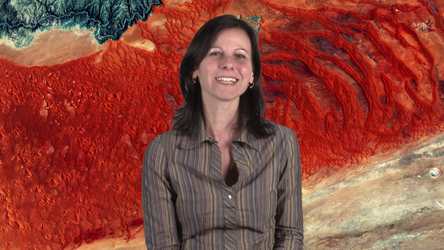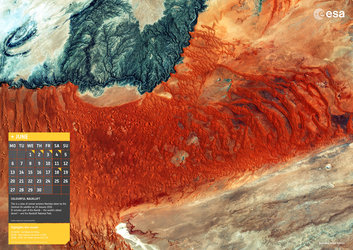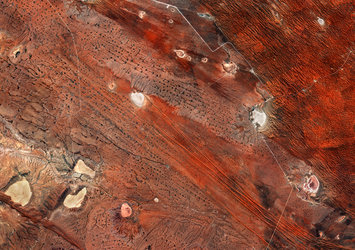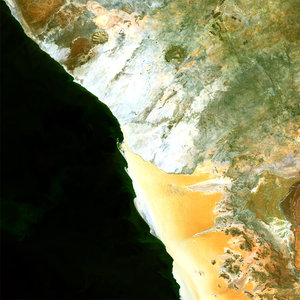Accept all cookies Accept only essential cookies See our Cookie Notice

About ESA
The European Space Agency (ESA) is Europe’s gateway to space. Its mission is to shape the development of Europe’s space capability and ensure that investment in space continues to deliver benefits to the citizens of Europe and the world.
Highlights
ESA - United space in Europe
This is ESA ESA facts Member States & Cooperating States Funding Director General Top management For Member State Delegations European vision European Space Policy ESA & EU Space Councils Responsibility & Sustainability Annual Report Calendar of meetings Corporate newsEstablishments & sites
ESA Headquarters ESA ESTEC ESA ESOC ESA ESRIN ESA EAC ESA ESAC Europe's Spaceport ESA ESEC ESA ECSAT Brussels Office Washington OfficeWorking with ESA
Business with ESA ESA Commercialisation Gateway Law at ESA Careers Cyber resilience at ESA IT at ESA Newsroom Partnerships Merchandising Licence Education Open Space Innovation Platform Integrity and Reporting Administrative Tribunal Health and SafetyMore about ESA
History ESA Historical Archives Exhibitions Publications Art & Culture ESA Merchandise Kids Diversity ESA Brand Centre ESA ChampionsLatest
Space in Member States
Find out more about space activities in our 23 Member States, and understand how ESA works together with their national agencies, institutions and organisations.
Science & Exploration
Exploring our Solar System and unlocking the secrets of the Universe
Go to topicAstronauts
Missions
Juice Euclid Webb Solar Orbiter BepiColombo Gaia ExoMars Cheops Exoplanet missions More missionsActivities
International Space Station Orion service module Gateway Concordia Caves & Pangaea BenefitsLatest
Space Safety
Protecting life and infrastructure on Earth and in orbit
Go to topicAsteroids
Asteroids and Planetary Defence Asteroid danger explained Flyeye telescope: asteroid detection Hera mission: asteroid deflection Near-Earth Object Coordination CentreSpace junk
About space debris Space debris by the numbers Space Environment Report In space refuelling, refurbishing and removingSafety from space
Clean Space ecodesign Zero Debris Technologies Space for Earth Supporting Sustainable DevelopmentLatest
Applications
Using space to benefit citizens and meet future challenges on Earth
Go to topicObserving the Earth
Observing the Earth Future EO Copernicus Meteorology Space for our climate Satellite missionsCommercialisation
ESA Commercialisation Gateway Open Space Innovation Platform Business Incubation ESA Space SolutionsLatest
Enabling & Support
Making space accessible and developing the technologies for the future
Go to topicBuilding missions
Space Engineering and Technology Test centre Laboratories Concurrent Design Facility Preparing for the future Shaping the Future Discovery and Preparation Advanced Concepts TeamSpace transportation
Space Transportation Ariane Vega Space Rider Future space transportation Boost! Europe's Spaceport Launches from Europe's Spaceport from 2012Latest

Colourful Naukluft
Thank you for liking
You have already liked this page, you can only like it once!
The Sentinel-2A satellite takes us over to central western Namibia, an area surrounding the Namib Naukluft Park, in this image taken on 28 January 2016.
The National Park includes part of the Namib – the world’s oldest desert – and the Naukluft Mountain range. It is the largest game park in Africa and the fourth largest in the world.
A typical west coast desert, moisture enters as fog, from the Atlantic Ocean, rather than receiving actual rainfall. A phenomenon also found along the coasts of South and North America, the surface water of Namibia’s coast is relatively cold, so that moist air moving in with westerly winds cools and falls as rain before it reaches the coast, allowing only fog to reach inland.
The fog enables life in this extremely arid region, for snakes, geckos and particular insects like the fogstand beetle, which survives by collecting water on its bumpy back from early-morning fogs, as well as hyenas, gemsboks and jackals.
The winds carrying the fog also create the imposing sand dunes, whose age is rendered by the burnt orange colour. The iron in the sand is oxidised, developing this rusty-metal colour over time. It becomes brighter as the dune ages, as is clearly visible along the middle of this natural-colour image.
Also visible along the top-left part of the image is the Kuiseb River bordered on one side by some of the tallest sand dunes in the world, and on the other by barren rock. The river blocks the movement of the dunes, which are blown northwards by the winds.
A road cuts through the top-right corner of the image. It is part of the C14 Highway, which runs for some 600 km from Walvis Bay, through Helmeringhausen and ends in Goageb.
To the right of the highway, there is a rock formation with a ridgeline, with water flowing along both sides, giving life to vegetation.
Along the bottom of the image, the Tsondab River is seen. Periodic rain falling in the Naukluft and Remhoogte Mountains causes the water to flow to the end of the ‘vlei’ – a shallow minor lake. The riverbed hits the colossal sand dunes, and appears bright white from the salt and mineral formations remaining after its water evaporates.
Despite the lack of rain, large camel-thorn and umbrella-thorn trees, and a few wild fig trees, can be detected growing along the riverbanks, benefitting from penetrating roots.
Sentinel-2A has been in orbit since June 2015, providing key information on vegetation health, among other major applications.
This image is also featured on the Earth from Space video programme.
-
CREDIT
Contains modified Copernicus Sentinel data [2016], processed by ESA -
LICENCE
CC BY-SA 3.0 IGO or ESA Standard Licence
(content can be used under either licence)

Namib Desert

Earth from Space: Colourful Naukluft

Uprint Calendar - June 2016

Southeast Namibia















 Germany
Germany
 Austria
Austria
 Belgium
Belgium
 Denmark
Denmark
 Spain
Spain
 Estonia
Estonia
 Finland
Finland
 France
France
 Greece
Greece
 Hungary
Hungary
 Ireland
Ireland
 Italy
Italy
 Luxembourg
Luxembourg
 Norway
Norway
 The Netherlands
The Netherlands
 Poland
Poland
 Portugal
Portugal
 Czechia
Czechia
 Romania
Romania
 United Kingdom
United Kingdom
 Slovenia
Slovenia
 Sweden
Sweden
 Switzerland
Switzerland
























